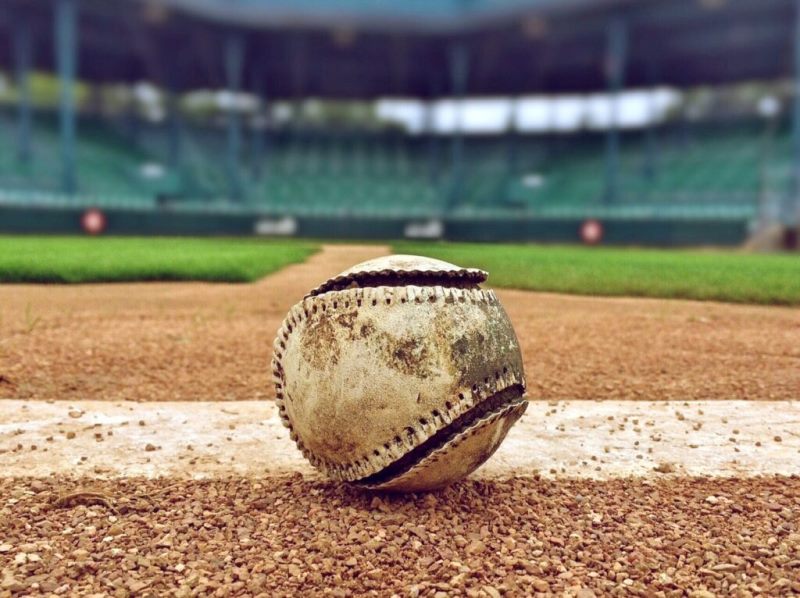In the heyday of baseball, there was one product that was almost synonymous with the sport. Chewing tobacco has a long history in Major League Baseball and is ingrained in the culture. I always wondered how the tie between the two started, and how the culture of the sport has been changed by the association with the tobacco industry. As society changes, and the use of tobacco becomes more and more of an image issue, how has major league baseball reacted?

What Is The History Of Baseball Players And Tobacco?
There was a period of twenty years when every baseball team has a tobacco sponsorship. During this period, baseball was America’s most popular sport and many people believed that every baseball player regularly used tobacco products. Many believed that the widespread use of tobacco in baseball was to the increased focus that using tobacco products provided. There was also a perception that chewing tobacco was a healthier way of getting the perceived effects of tobacco than smoking cigarettes. Because of this, the majority of players that used tobacco products opted for chewing tobacco rather than smoking. There were only ever a seldom few that ventured into smoking. Chewing was definitely the preferred method of tobacco consumption.
There has been a great deal of research on this topic. Research and the data on the effects of tobacco on the players suggest that these products do not increase focus or attention and do not increase performance. The research also seems to say that chewing tobacco is not less harmful than smoking, but that the two are harmful in slightly different ways.
Even though the products did not increase focus or improve performance, the misconception that they did was enough to increase the use of the products and tie them to the institution of baseball. For many years the use of these products spread and baseball became one of the largest supporters of chewing tobacco as a product. There was even a children’s bubble gum that was baseball themed and was designed to imitate the use of chewing tobacco.
Over the years, more and more research came out about the effects of tobacco products and that information became even more accessible to the public. The data began to give a clear picture of the harm and health risks associated with the use of tobacco. As the information spread the favor for tobacco products began to fade, and a stigma began to grow. The advertisement and ties between baseball and the use of tobacco began to fall apart, and baseball tried to distance itself from the use of it.
The use of tobacco products decreased in the baseball community, and there was a stigma around using it on the field. The problem with this is that tobacco is addictive, and it is not so easy to just stop a habit like that once it has started. Where players and staff could once openly and proudly use tobacco on the field, they had to sneak off to use partake, to not show that they were still using. There was a growing concern what kind of role models players and managers on the team would be for children if they continued to openly use these products, so hiding the use was the best option. There was a massive effort to clean up the sport and detangle tobacco from the image of the sport. The addition of the players managed to be an issue, and the players began to use their struggle with the addiction into a cautionary tail. Players eventually began to turn and warn children that wanted to be like them how hard it is to quit the habits.
Baseball went from one of the biggest supporters of the use of tobacco to one of the loudest against its use. Players continued to speak out, and they grew in number setting out a positive message of avoiding tobacco to kids. The stadiums have also started an all out ban against tobacco products. Many of the stadiums have even gone full no smoking. Others have designated smoking areas. There are even a few that if you leave the stadium to smoke have a no re-entry point.
The minor league has an official ban on using tobacco. Players can be fined between $100 to $1,000 if they are caught using. The minor leagues, while they do have strict anti-tobacco policies, are not nearly as strict as the major leagues. The major league clubs have made the biggest effort to distance themselves. The CDC reports that the majority of tobacco users begin using tobacco products before they graduate high school. The effort to rid the league of tobacco has a strong target to children to warn them of dangers and consequences of the products as well.
From Love To Hate
The relationship between tobacco and baseball is a complicated one. It started with baseball players using tobacco products to increase attention and focus. Even though these products did not increase performance, they believed they did, and it quickly became part of the culture to use tobacco. So it seemed like every baseball player was using, and tobacco started advertising and sponsoring almost all things baseball. Eventually, the verdict came in that tobacco was not only not helpful, but actively harmful. It has taken years, and baseball is still struggling to move away from tobacco. It is now one of the most progressive anti-tobacco sports and tries to set a good example for children.

Hello everyone, I’m Darron and head Editor of this site. I’m so proud to be a part of this project.
